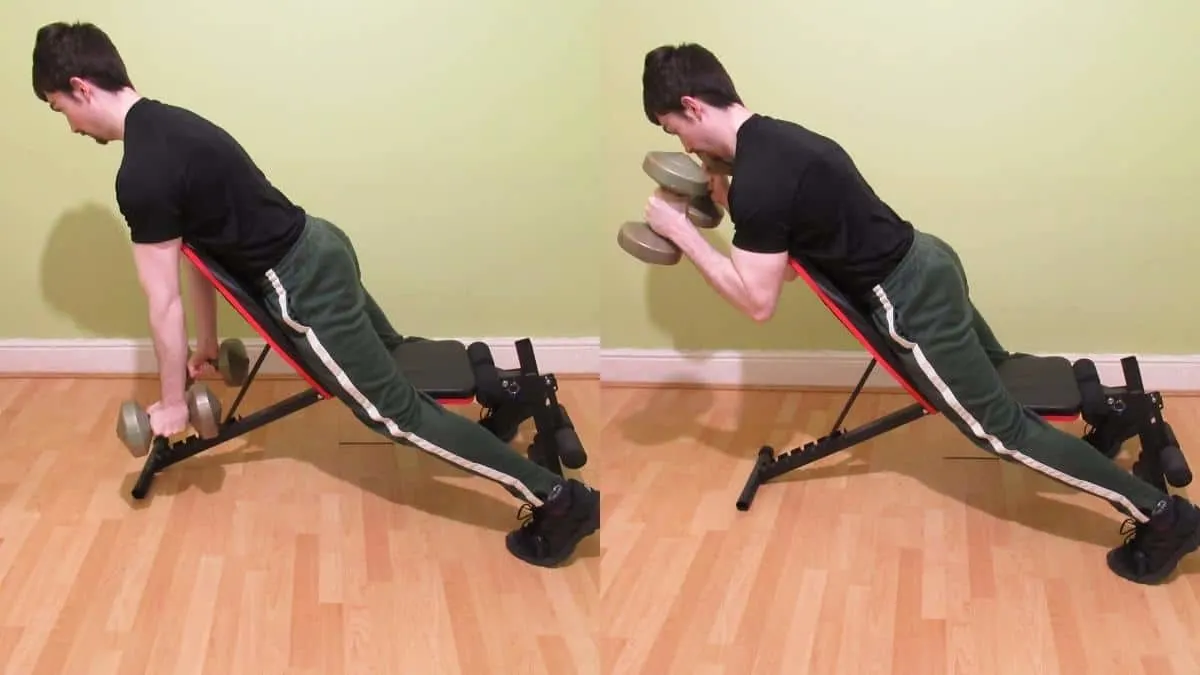Spider hammer curls are a highly underrated exercise for building the biceps muscles and gaining upper arm strength. This is because you’re achieving better muscle isolation by bracing your arms against the pad, which is to say, it makes cheating the weights up much harder.
DB hammer curls certainly have their place in any weight training routine. But sometimes, trying novel exercises like spider curls can inject some much-needed life into your workout routine, which can help to keep you motivated and on track toward reaching your goals.
Related Exercise: Hammer kettlebell curls
Spider hammer curl exercise details
- Main Muscles: Biceps brachii, brachialis, brachioradialis
- Secondary Muscles: Forearm extensors, forearm flexors
- Exercise Type: Strength
- Exercise Mechanics: Isolation
- Difficulty Level: Beginner
- Equipment Needed: Dumbbells, preacher pad (or a weight bench)
How to perform spider hammer curls

While you can also perform the hammer spider curl by bracing your torso against the backrest of a weight bench, we recommend using a preacher pad if possible because the pad stabilizes your arms to a greater degree—thereby making it easier to isolate your biceps.
- Grab two relatively light dumbbells and walk over to a preacher station.
- Push your stomach/chest into the sloped side of the pad and let your arms hang over the other side.
- With the backs of your upper arms braced against the vertical side of the pad, allow your elbows to fully extend.
- Begin the rep by curling the weights—with a neutral grip—toward your shoulders.
- Keep lifting until your biceps and brachioradialis are maximally contracted (most likely when they touch each other).
- Then, lower the dumbbells under control until your elbows are once again extended.
- Repeat for 3-4 sets of 10-15 reps.
Spider hammer curl pros and cons
Dumbbell spider hammer curls can build bigger and stronger arms if you use the correct form. However, the exercise isn’t for everyone (and you’ll soon learn why). Be sure to check out the pros and cons before deciding whether or not to include this movement in your training regime.
Pro: Incredible bicep contractions
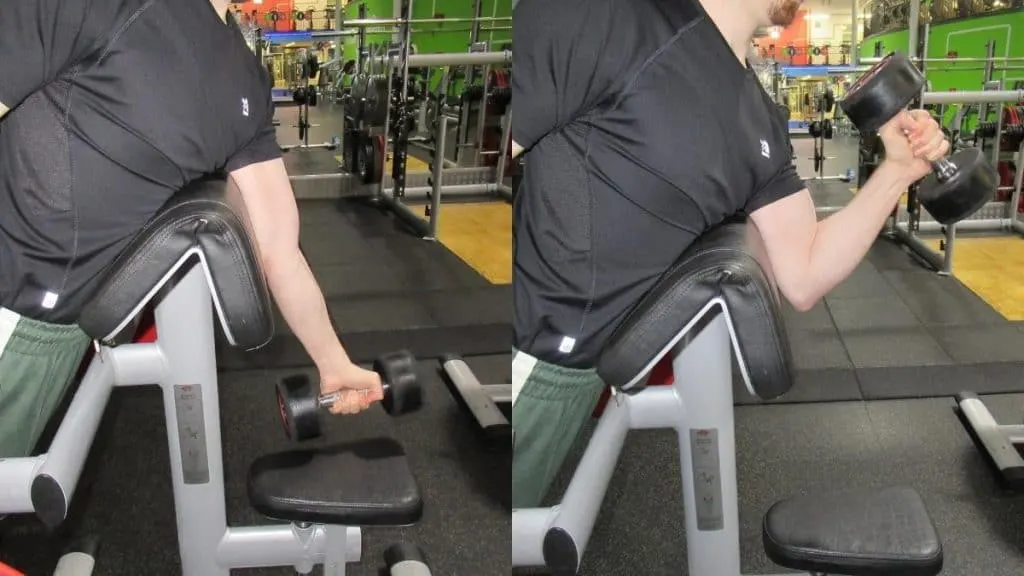
Like the concentration hammer curl, the spider hammer curl produces a very intense peak contraction as you flex your biceps. This helps you to improve your mind-muscle connection by getting accustomed to squeezing your biceps under load, which is an invaluable skill to have if you’re a bodybuilder or someone seeking to grow their arms.
Similarly, the powerful peak contraction results in a stronger muscle pump by increasing the amount of lactic acid in the blood. Not only does this make your physique look more aesthetic while you’re training, it can also lead to more hypertrophy in the long run by making your muscle fibers grow thicker. [1]
If you want to intensify the peak contraction even more, then you can blast your biceps with constant tension by doing spider cable curls.
Con: Requires extra equipment
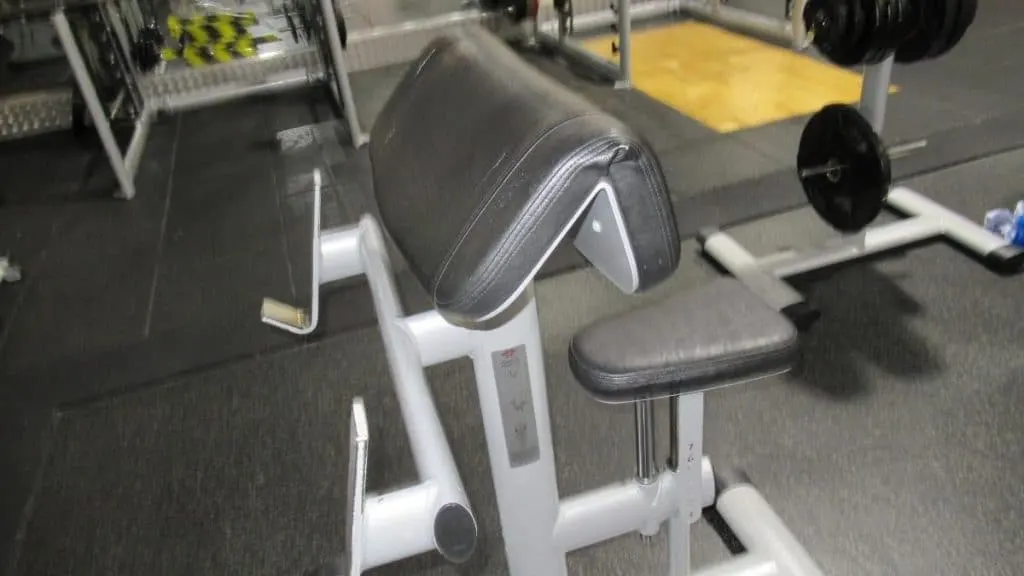
Exercises such as in and out hammer curls require minimal equipment. As such, they’re an excellent bicep drill to perform if you train at home. Spider hammer curls, on the other hand, require that you have an adjustable weight bench at your disposal or, ideally, a preacher curl station.
Sourcing this equipment can prove costly if you work out at home and don’t have much money to spare. But even if you have access to a gym via a health club membership, it can still be tricky to perform the hammer spider curl properly because most gyms only have 1-2 preacher curl stations, which may well be taken during peak times.
Therefore, you might want to stick to more accessible versions of the hammer curl in order to be able to perform it irrespective of your equipment availability (apart from the basics like dumbbells). Alternatively, you could just do spider curls with bands if you don’t have access to free weights.
Pro: Promotes proper form
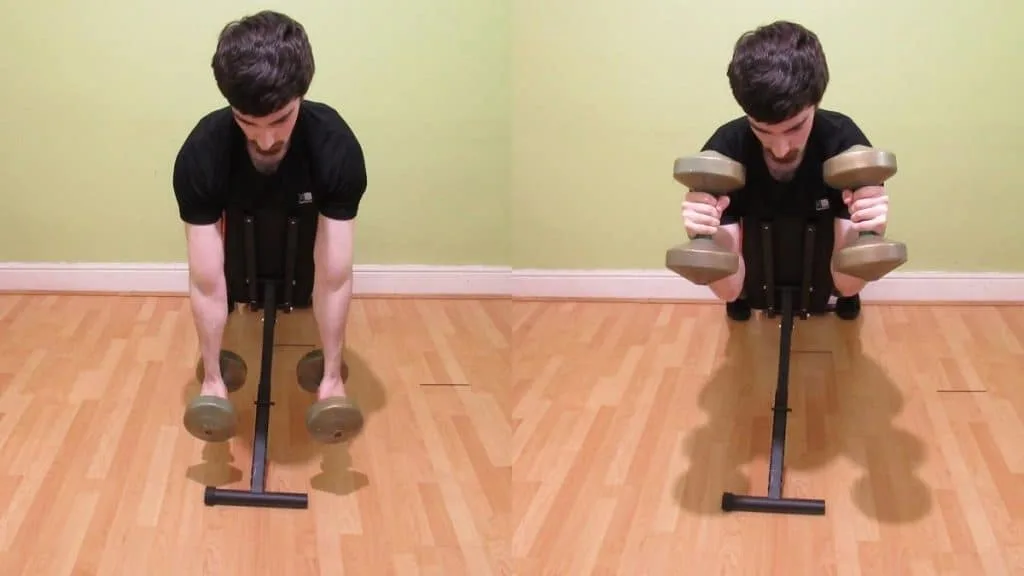
When you perform a hammer curl on the machine, the equipment makes it easier to isolate your biceps and brachioradialis because you can brace your upper arms against the machine’s pad. Hence why it’s a great exercise for learning the correct form.
Well, it’s almost exactly the same with spider hammer curls. The only difference is that you’re resting your arms against the vertical side of the pad rather than the sloped side. This positioning enables you to keep tension on the target muscles because you can’t swing the weights up with your shoulders.
Just be sure to take full advantage of this exercise by also getting a full range of motion. In practice, this means maximally contracting your brachioradialis and biceps on the way up and then completely extending your elbows on the way down in order to get a proper muscle stretch.
Con: Awkward positioning

Spider hammer curls can feel uncomfortable, not just because of the lactic acid raging through your biceps, but also because you have to press your stomach (or chest, depending on your height and that of the equipment) into the pad.
If you have a strong core, then this shouldn’t be an issue. [2] You can just flex your abs so that you don’t feel winded by the pad. However, if you’re new to the gym and haven’t yet built up your core strength, then your torso might feel uncomfortable if it’s pressed into the pad for prolonged periods of time.
The verdict: Are spider hammer curls good for your biceps?
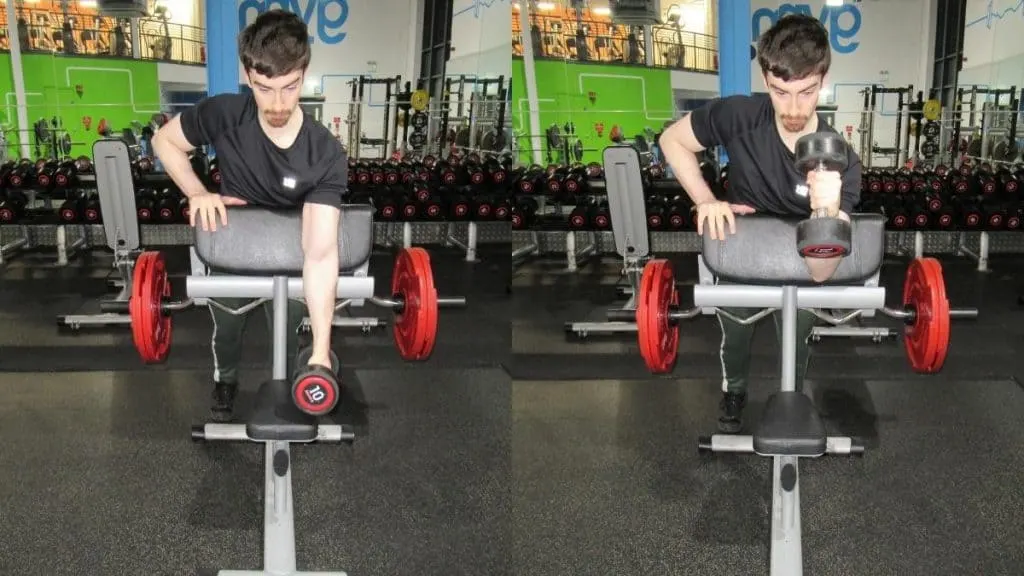
The hammer spider curl is an excellent exercise for isolating three of the key upper arms muscles; the biceps, brachialis, and brachioradialis. You can also do a single-arm dumbbell spider hammer curl for even greater muscle isolation, but many people will naturally prefer the convenience of training both arms together.
It’s recommended to use moderate to high reps for this exercise because the most important objective of the movement is to isolate your muscles. Heavy weights have their place, but save that kind of training for your barbell work.
By doing plenty of reps on your spider hammer curls, you’ll also bring up your brachialis, if it’s lagging, because that muscle is slow-twitch and thus responds best to high reps and high volume training.
References
- Nishimura, A., Sugita, M., Kato, K., Fukuda, A., Sudo, A., & Uchida, A. (2015). Hypoxia increases muscle hypertrophy induced by resistance training. International Journal of Sports Physiology and Performance, 5(4), 497–508. https://pubmed.ncbi.nlm.nih.gov/21266734/
- Koh, H.-W., Cho, S.-H., & Kim, C.-Y. (2014). Comparison of the Effects of Hollowing and Bracing Exercises on Cross-sectional Areas of Abdominal Muscles in Middle-aged Women. The Journal of Physical Therapy Science, 26(1), 295–299. https://www.ncbi.nlm.nih.gov/pmc/articles/PMC3944309/

